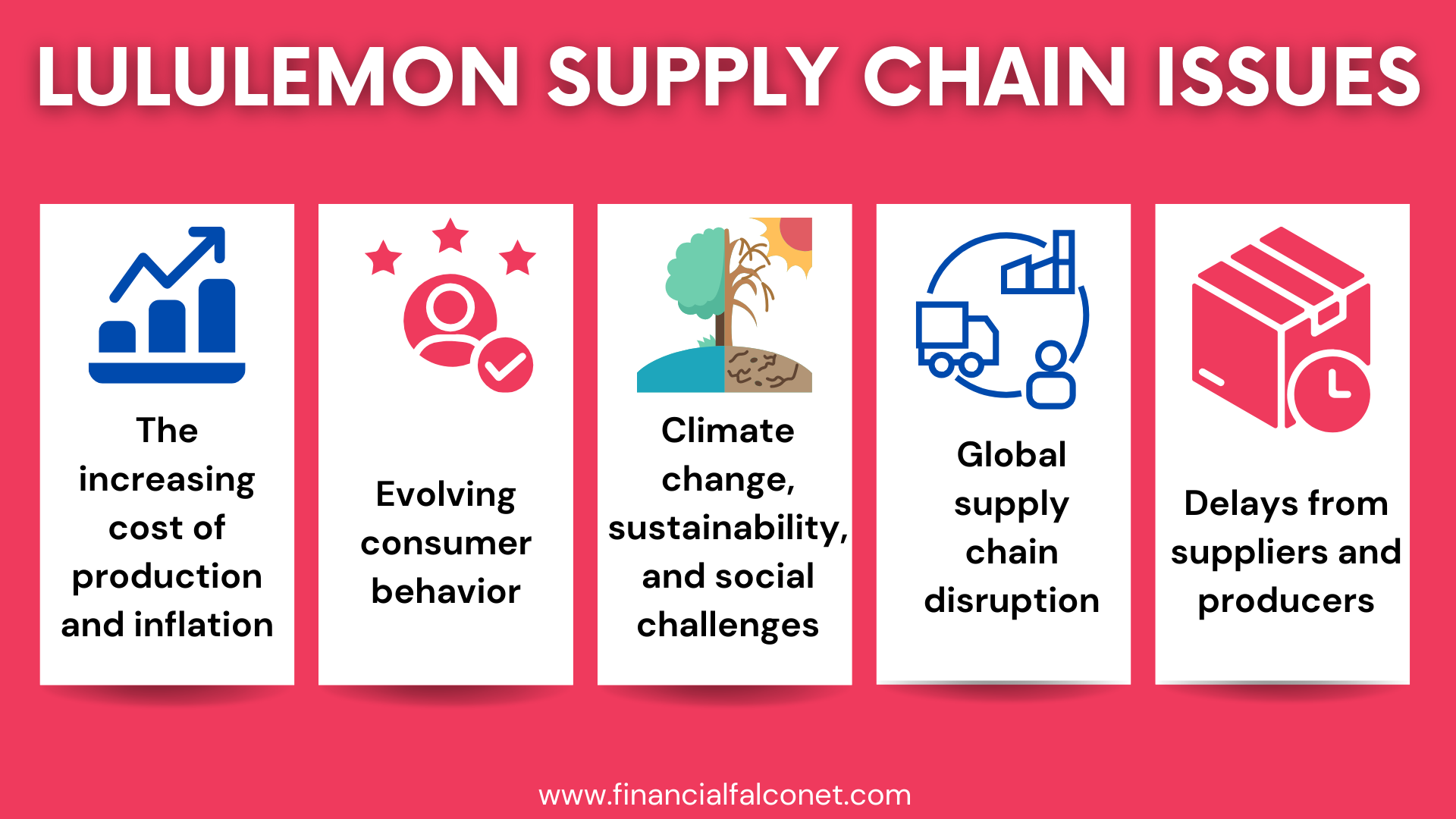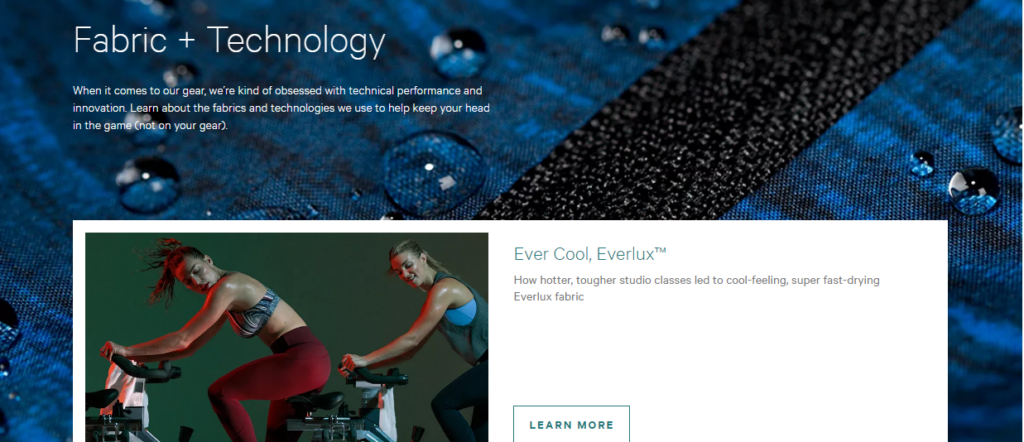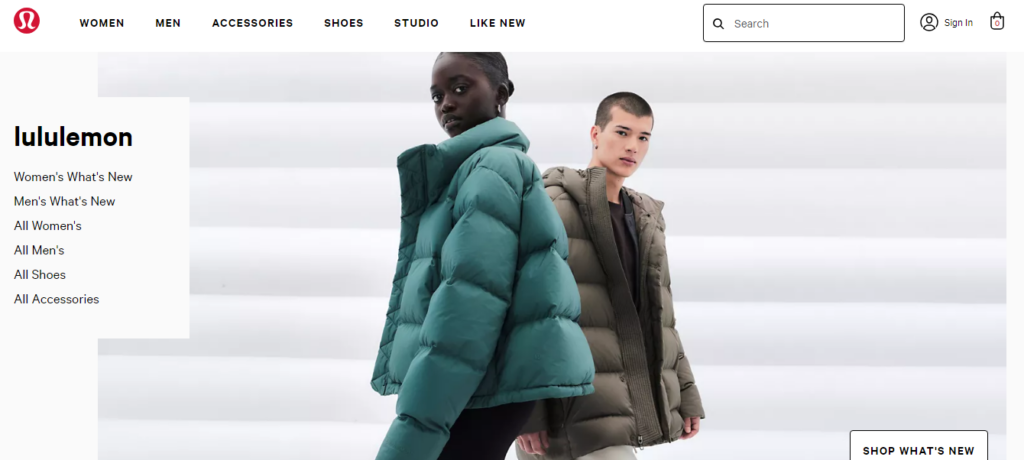Every business that exists has a functional supply chain that ensures its daily operations. Lululemon’s supply chain allows the company to provide high-quality athleisure wear, shoes, and accessories to its teeming customers.
Lululemon Athletica Inc. was founded in Vancouver, Canada in 1998 by Chip Wilson as a retailer of premium yoga pants for women when he noticed a gap in the market due to the lack of appropriate pants.
By filling this gap and providing appropriate pants that supported various yoga poses without becoming sheer, Lululemon gained a significant competitive advantage in the world of yoga wear.
The brand has metamorphosed over the years to become a multinational retailer of an increasing range of athletic apparel, accessories, shoes, and leisure wear.
Due to this expansion beyond the sale of yoga pants, Lululemon’s target market has also expanded beyond female yogis to include women and men involved in a range of athletic activities as well as those who want more comfortable clothes for work and leisure.
The company’s headquarters is located in British Columbia, Canada. Worldwide, the brand has over 34,000 employees and 670 company-operated stores in 18 countries including China, the United States, Canada, Australia, the United Kingdom, Germany, and Japan.
At the end of the 2022 fiscal year, the company reported a revenue of $8.1 billion. Here, we shall discuss Lululemon’s supply chain processes and some issues that impede the smooth functioning of the brand’s supply chain.
See also: Tesco Supply Chain Process and Issues

What is the supply chain for Lululemon?
The supply chain of Lululemon comprises research and development of apparel designs and fabrics, the manufacturing and supply of inventory to the brand’s distribution centers, and transportation to stores. It also includes selling products to customers using several channels such as company-operated stores, online, and third-party sales.
The supply chain of Lululemon includes all the aforementioned steps. It includes all activities undertaken right from the product ideation at Lululemon’s research and development laboratory until the consumer gets access to the product.
See also: Ford Suppliers List and Components Supplied
Lululemon supply chain processes
- Research and development
- Lululemon suppliers and manufacturers
- Logistics
- Distribution centres
- Lululemon stores and website
- Third-party sales
Research and development
Lululemon’s supply chain starts with the work done by the brand’s research and development team. This team comprises individuals who are passionate about the sweat life, that is, individuals who understand the importance of keeping fit by getting involved in physical activities.
The brand’s research and development team comprises scientists, engineers, designers, and technologists who work from a specialized laboratory in Canada called Whitespace. Here, they work on creating innovative apparel designs with distinctive features that offer support or compression. The sensation categories developed by the brand include tight, hugged, held-in, naked, and relaxed.
They also work on developing the right fabric blends that will support the apparel designs by combining different fabrics. These fabrics, just like the apparel designs, are also distinct and offer several features including sweat-wicking, protection against harmful ultra-violet rays, anti-stink, and stretchy.

The researchers and development team at Lululemon depend on their experience as physically active individuals as well as the feedback received from the Lululemon strategic sales partners, creators, ambassadors, affiliates, and other customers when developing new designs and fabrics or improving existing ones.
For example, based on consumer feedback, the research and development team of Lululemon designed and developed a bra made from an exclusive fabric known as light ultralu. The bra provided the needed support for both high-intensity workouts and leisure. It also provided the naked feel which made its wearer feel as though they were not wearing a bra due to its lightness.
Lululemon suppliers and manufacturers
Although Lululemon designs its apparel and develops the fabric used in its products, the work done in its research lab is on a small scale. To meet consumer demand and mass produce its products, the brand depends on several raw material suppliers and product manufacturers.
Some of these suppliers and manufacturers have worked with Lululemon for years while others are changed from time to time based on several factors including fluctuations in demand, inability to keep up with the company’s requirements, or other supply chain issues.
Currently in 2023, the brand sources its raw materials as well as finished goods from 17 countries including China, Indonesia, Sri Lanka, Taiwan, Vietnam, Japan, and the United States.
Lululemon suppliers
| Supplier | Location | Item supplied |
|---|---|---|
| Antanova Fashions Corp. | United States | Apparel |
| Delta Alfa Çorap ve Tekstil San. Tic. AS | Turkey | Accessories |
| Apex (Zhejiang) Textile Co., Ltd. | China | Fabric |
| Athena Viet Nam Footwear Company | Vietnam | Footwear |
| CPCG International Co,. Ltd. | Cambodia | Accessories |
| De Licacy Industrial Co., Ltd. | Taiwan | Fabric |
| Crystal SAS Sede Marinilla | Colombia | Accessories |
| Cofaco Industries SAC | Peru | Apparel |
| Chung Jye Shoes Co. Ltd. | China Mainland | Footwear |
| PT. Pungkook Indonesia One | Indonesia | Accessories |
| Victoria Textile Ltd. | Republic of Korea | Fabric |
| Charter Link Clark Inc | Philippines | Apparel |
| Zentrix, S. De R.L. De C.V. | Mexico | Apparel |
| Trischel Fabric (Private) Limited | Sri Lanka | Fabric |
Logistics
Logistics is an integral aspect of Lululemon’s supply chain process. It deals with the transportation of products from the brand’s manufacturers and suppliers to its distribution centres and onward, to its stores.
The company uses several international, regional, and local logistics companies such as DHL, XPO Logistics, Bleckmann, and FedEx when moving products through its supply chain.
Distribution centres
The supply chain process of Lululemon also includes distribution centers. These distribution centers serve as a midpoint in the supply chain; it is here that products from different suppliers get aggregated and it is also from here that products get distributed to various stores where consumers can purchase them.
In some instances, distribution centers ship products directly to consumers who have made their purchases online. The brand has strategically located distribution centers around the world to ensure efficient and timely delivery of its products.
The company uses a combination of company-owned and third-party logistics providers to warehouse and distribute apparel, footwear, and accessories from several warehouse locations in the United States, Netherlands, and China. According to the brand:
We regularly evaluate our distribution infrastructure and consolidate or expand our distribution capacity as we believe appropriate for our operations and to meet anticipated needs.
Lululemon
Currently, in 2023, Lululemon has 7 distribution centers located in Canada, Australia, and the United States which it directly operates. The brand owns one of the distribution centers while the other 6 are leased properties.
Lululemon stores and website
Lululemon stores are part of the endpoints in the company’s supply chain process. The stores are usually strategically located in areas such as fitness studios, malls, tourist destinations, and downtown areas which provides the company with enhanced visibility. It also makes accessing the store easier for customers due to the location.
Additionally, the brand typically converts its stores to yoga studios at night where consumers can take yoga sessions. Aside from yoga, the brand incorporates other community-centered and fitness-related activities such as talks, workshops, and group fitness activities.

Currently, in October 2023, Lululemon operates over 670 stores in several countries including South Korea, France, Spain, Malaysia, and Singapore. Lululemon also reaches consumers through its website where people can easily shop for everything they want from the comfort of their home or workplace.
Third-party sales
Aside from company-operated stores, lululemon’s supply chain also includes third-party stores and other partnership agreements through which individuals or groups can access the company’s products.
As of January 29, 2023, Lululemon had 26 retail locations which are operated by third parties under license and supply arrangements. The number of licensed stores and country where they are found is captured in the table below:
| Country | Number of stores |
|---|---|
| Mexico | 12 |
| United Arab Emirates | 7 |
| Qatar | 3 |
| Saudi Arabia | 3 |
| Kuwait | 1 |
See also: Costco Supply Chain Issues and Management
How many suppliers does Lululemon have?
The number of suppliers that Lululemon has changed from time to time. Based on the brand’s supplier disclosure as of April 2023, the company has over 140 suppliers. These include tier 1 and 2 suppliers.
Lululemon’s suppliers are scattered across the globe and supply the company with different items including footwear, fabrics, accessories, and apparel.
See also: Home Depot Supply Chain: Issues and Process
Lululemon supply chain issues
- Evolving consumer behavior
- Climate change, sustainability, and social challenges
- Global supply chain disruption
- Delays from suppliers and manufacturers
- Increasing cost of production and inflation
Evolving consumer behavior
Evolving consumer behavior is one of the challenges that can adversely affect the supply chain of Lululemon. When the brand began, it focused mainly on the retail of yoga pants to females. However, it is common knowledge that to participate in yoga, you equally need a top. Thus, the brand began retailing tops alongside their pants. They also ventured into the sale of yoga mats.
Although the aforementioned has been an intrinsic part of the company’s branding as a provider of premium yoga wear and accessories, the brand has to still deal with consumers who may no longer be interested in yoga due to changes in preferences.
These consumers may instead develop interest in other physical activities like running, tennis, swimming, or hiking. Additionally, the push of a considerable number of individuals towards spending less time outside their homes especially due to staying safe during the pandemic has altered the ways a lot of people shop and keep fit.

Some common changes in consumer preferences recently include exercising at home instead of going to the gym, shopping online, and wanting functional clothes that can serve more than one purpose.
In order to tackle the issue of working out at home, Lululemon acquired a company that produced a fitness interactive gadget in 2020. The mirror enabled individuals to have an interactive workout session in the comfort of their homes.
In addition, Lululemon is constantly trying to innovate its product lines with new fabrics, styles, colour palettes, and other features that enable the brand’s products to serve dual purposes of not just sweating, but also going about other daily activities.
The brand also makes its products easily accessible to consumers digitally through its website where they can shop 24/7. Apart from the company’s official website, the brand recently partnered with Zalando, a leading European E-Commerce platform for fashion and lifestyle.
The partnership with Zalando commenced in June 2023 and has made the brand’s product accessible to consumers in 12 European countries including Belgium, the Czech Republic, Denmark, Finland, and the Netherlands.
These proactive steps taken by Lululemon show that the brand is willing to rebrand itself and its products to meet the changing needs of consumers while providing them with top-quality apparel and other accessories.
Climate change, sustainability, and social challenges
Climate change, sustainability, and social challenges are perhaps some of the biggest challenges that can and have affected the supply chain of Lululemon. The gradual but consistent rise in global average temperatures due to increased concentrations of carbon dioxide and other greenhouse gases in the atmosphere has caused significant changes in weather patterns around the globe.
Some of these changes include poor water quality, heatwaves, natural disasters, water scarcity, and harsher winters. These events could adversely impact the cultivation of cotton, which is an essential raw material in the supply chain of Lululemon.
A reduction in the availability of cotton could disrupt the operation and productivity of the company’s contract manufacturers. This in turn results in increased cost of production costs and impact the types of apparel products that will be available to consumers.
As a means of combating climate change, a lot of governments, pressure groups, and environmental scientists have called for the sustainable and responsible use of natural resources and the environment. Recently in August 2023, Lululemon was urged by groups of concerned athletes through EcoAthletes and Action Speaks Louder to decarbonise its supply chain in order to help save the environment and curb climate change.
Since Lululemon operates in different countries, the brand has to adapt its operations to suit the laws, regulations, and requirements in the different countries where it operates. These can pose a significant challenge to the supply chain, especially as regards changing the way the company sources goods, power its stores, transports goods, and manages waste.
Lululemon has however shown considerable commitment towards mitigating supply chain issues that may arise due to environmental issues. For instance, in June 2022, the brand joined H&M Group as one of the backers of a $250 million fund aimed at accelerating efforts to cut carbon emissions in the fashion industry’s supply chain.
The fund is geared at ending the use of fossil fuels such as coal in manufacturing, developing next-generation materials for production, expanding the use of renewable energy sources such as wind and solar as well as improving energy efficiency.
The brand has also shown its commitment to the living standards and livelihood of the many individuals who work tirelessly in its supply chain especially farmers and factory workers. This led to the creation of several initiatives by the brand including the Responsible Supply Chain Disclosure, Impact Reports, and Maker Wellbeing.
Global supply chain disruption
Lululemon’s supply chain has been affected by global supply chain disruption which originated sometime in 2019 due to the spread of the Coronavirus. Some of the supply chain issues included container shortages, port delays, increased cost of production, and global shutdown of economies.
As stated by the brand:
COVID-19 is affecting global supply chains in unprecedented and challenging ways, now and into the future. We face these challenges rooted in our values of connection and responsibility, and are committed to respecting and upholding human rights through lululemon’s responsible business practices with our supply chain partners. We work closely with stakeholders to understand impacts and make decisions for our business, our supply chain partners, the health, safety and wellbeing of the people who make our products, and the planet.
Lululemon
The initial border closures and subsequent shutdown of the global economy due to the pandemic meant that goods could not be transported between countries and even within countries. This resulted in the short supply of a wide range of items ranging from raw materials to finished products.
The surge in demand for fitness gear made it even more complicated for the brand as more people shopped online for gear to keep fit with while locked up at home.
The gradual reopening of borders and businesses presented some respite as well as additional challenges such as inadequate vessels for the transportation of products, port congestion, and longer shipping time.
Even after the gradual reopening of borders and reopening of businesses, the brand still faced challenges as some of its suppliers in Vietnam could not operate due to the pandemic.
Lululemon was able to navigate these challenges by using air freight to transport some of its products, seeking alternative suppliers, and supporting its existing suppliers to keep producing in a safer environment.
Delays from suppliers and manufacturers
Despite being one of the biggest athleisure brands in the world, Lululemon depends greatly on suppliers and manufacturers for the products it retails to consumers. The brand states that:
We do not manufacture our products or raw materials and rely on suppliers and manufacturers located predominantly in the Asia Pacific region, including the People’s Republic of China (PRC). We also source other materials used in our products, including items such as content labels, elastics, buttons, clasps, and drawcords, from suppliers located primarily in this region.
Lululemon
The brand’s exclusive fabrics are also produced by very few textile companies due to the technically advanced nature of the fabric blends. Hence, any supply chain issue such as a delay in supply from manufacturers and suppliers will negatively impact Lululemon’s supply chain process.
Lululemon in its 2022 annual report specified that the company does not have a long-term contract with any of its suppliers and manufacturers. This means that there is no guarantee of sustained supply.
Thus, whenever a delay occurs, it impacts the supply chain and consumers will not be able to buy the products they want since the delay would mean that products will not be available at Lululemon stores.
In order to tackle this issue of delay from suppliers and manufacturers, the brand may need to implement vertical integration in its supply chain. In this way, they will gain more control over the production of the products they retail.
Increasing cost of production and inflation
Another supply chain issue faced by Lululemon is the increasing cost of production and inflation that continues to ravage the world. A significant portion of Lululemon’s products are produced in South Asia and South East Asia. Initially, this region was a choice of production location due to the cheap cost of production.
In recent times, however, there has been an increase in the costs of labor
and other costs of doing business in the countries within this region. This has led to a significant increase in the costs of producing Lululemon products.
Some of the fabrics used in the brand’s products include synthetic fabrics whose raw materials include petroleum-based products, silver, and natural fibers such as cotton. Therefore, factors such as consumer demand, speculation on the commodities market, and the relative valuations and fluctuations of the currencies of producer versus consumer countries could cause raw material costs to increase.
Additional factors such as trade relations, sanctions, inflationary pressure, geopolitical or economic conditions, and other factors that are generally unpredictable could also increase the cost of production.
However, despite the increasing cost of production and inflation, Lululemon has steadily recorded good sales which have contributed to the company’s revenue and profit margins.
See also: Nestlé Supply Chain: Issues and Management
Does Lululemon manufacture its own inventory?
No, Lululemon does not manufacture its own inventory. Although the brand develops and designs its products, it signs contracts with manufacturers to mass-produce the inventory that it sells.
Lululemon supply chain strategy
Lululemon uses a number of strategies to ensure the smooth running of its supply chain. Right from the ideation stage of its supply chain, the brand employs strategies that enhance the effective functioning of its supply chain.
One of the strategies used by the brand is the development of innovative designs and fabric blends which they patent. This strategy protects the brand from competitors who may want to replicate its designs or fabrics.
Since the designs and fabrics are patented, no competitor can have access to them. Hence, it eliminates the demand for such designs or fabrics thereby easing pressure on the brand’s supply chain.
Another strategy the company uses is deploying alternative means of transporting its products within the supply chain such as air, water, or land. Depending on the location where the brand’s products need to get, the brand employs an appropriate transportation system to ensure that the products get delivered on schedule.
An additional strategy used by the company is the use of third-party stores, digital media, sales partners, micro-influencers, and brand ambassadors to enhance their brand presence as well as the accessibility of their products to a wider market.
This strategy ensures that more individuals, teams, or corporate entities that want to buy the brand’s products can easily access them through several platforms that are made available either directly from the brand or any of its partners.
All the strategies employed by Lululemon in its supply chain are propelled by the brand’s Power of Three X2 initiative which is centered on giving consumers (guests) the best experience, product innovation, and international expansion of the brand.
See also: Kroger Supply Chain Issues and Management
Conclusion
The supply chain of Lululemon has been affected by several issues which we have discussed here. The brand has however shown its resilience and commitment to meeting guests’ expectations by ensuring the deployment of supply chain strategies that enhance the effective functioning of their processes.
Therefore, It is not surprising that the brand continues to be one of the preferred choices when it comes to athleisure worldwide.
Last Updated on November 2, 2023 by Nansel Nanzip BongdapBlessing's experience lies in business, finance, literature, and marketing. She enjoys writing or editing in these fields, reflecting her experiences and expertise in all the content that she writes.
